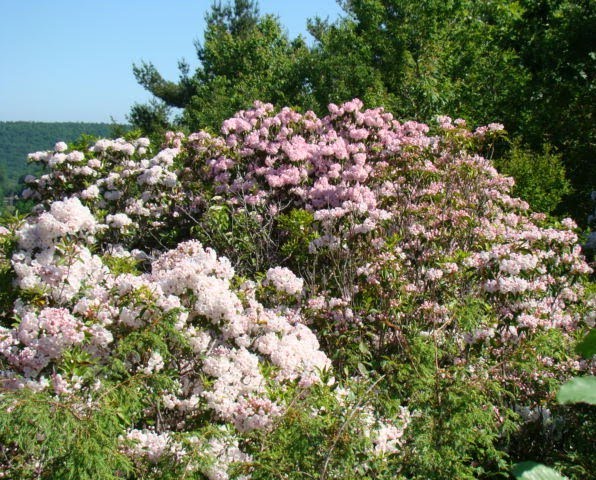
Note: Photos presented here were taken in April along Connecticut Route 263, where what appears to be Viburnum plicatum var. tomentosum (native to China and Japan) has naturalized into the shadowy deciduous forest margins seemingly a native species. Unable to locate native Viburnum, these photos are included in the absence of photos for the native species.
General Information
There are a number of Viburnum native to Connecticut. These deciduous shrubs are easy to grow and have clusters of white or cream flowers, colorful fruit, and attractive fall foliage. They make excellent residential landscape plants and all are great sources of wildlife food and habitat.
Plant Habit and Form
Most native Viburnum species range between 4 and 15 feet tall. They have irregular to rounded, upright to erect forms with rounded crowns.
Growing Requirements
Most native Viburnum species thrive in moist, well-drained soils in partial shade locations. Some species can tolerate dryer soil conditions as well as more open areas. They range in hardiness from zone 3 to 8.
 Flowering and Fruiting
Flowering and FruitingThe small white or cream flowers of native Viburnum are arranged in rounded, convex or flattened clusters. Individual flowers are 1/4 to 1/2 inch long with clusters 4 to 6 inches across. The fruit, or drupes, matures from green to red to dark blue or black when ripe in early fall. The age of native Viburnums when they first produce fruit ranges widely from 2 to 3 years up to 8 to 10 years. Part of the ornamental value and wildlife attraction is due to fruit persisting into winter.
Pests and Diseases
Bacterial leaf spot, nematodes, mealy bug, and powdery mildew can be problematic for different species of native Viburnum.
ID Tips
Small, oval, blue-black drupes (fruit). Small white or cream flowers.

